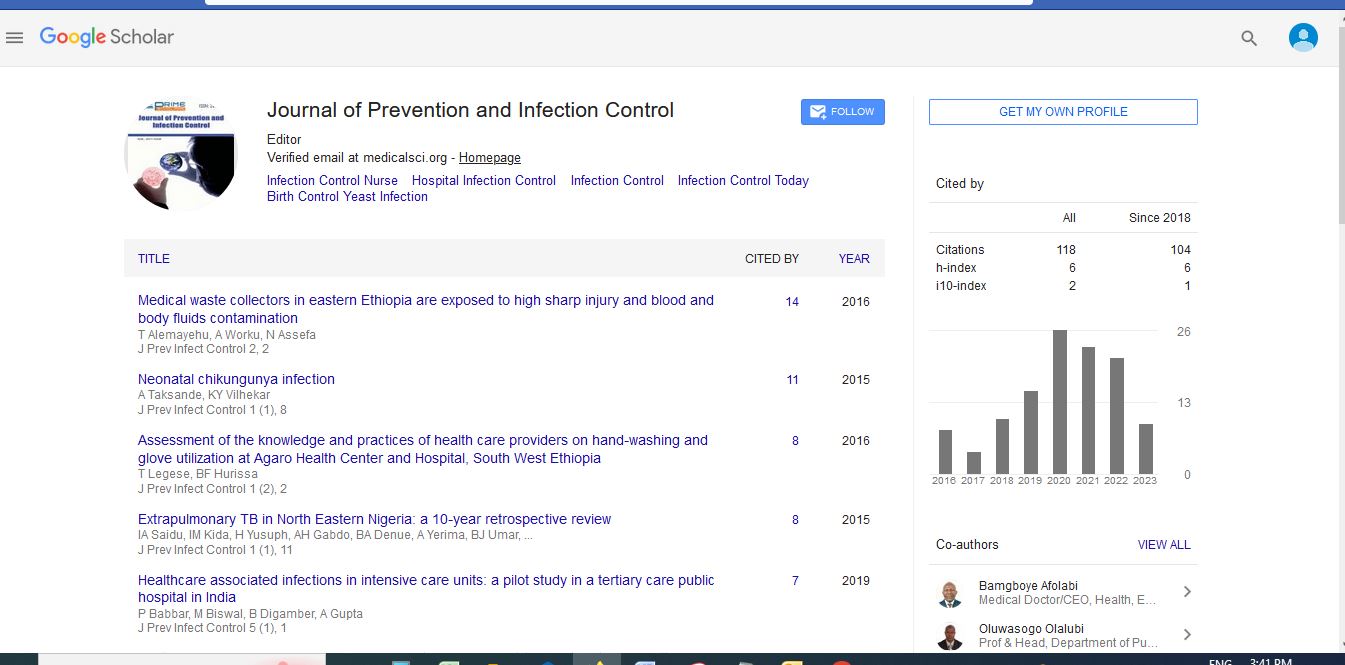Opinion - (2024) Volume 10, Issue 4
The Science of Sterilization: Ensuring Safety and Hygiene Across Industries
Fang Wang*
Department of Infection Prevention and Control, Chinese University of Hong Kong, China
*Correspondence:
Fang Wang,
Department of Infection Prevention and Control, Chinese University of Hong Kong,
China,
Email:
Received: 02-Dec-2024, Manuscript No. IPJPIC-25-22458 ;
Editor assigned: 04-Dec-2024, Pre QC No. IPJPIC-25-22458 (PQ);
Reviewed: 18-Dec-2024, QC No. IPJPIC-25-22458 ;
Revised: 23-Dec-2024, Manuscript No. IPJPIC-25-22458 (R);
Published:
30-Dec-2024, DOI: 10.36648/2471-9668-10.4.35
Introduction
Hospitals and clinics rely heavily on sterilization to ensure that
surgical instruments, syringes, and medical devices are free from
contamination. Autoclaving, EtO gas, and hydrogen peroxide
sterilization are commonly used methods. Pharmaceutical
manufacturers must adhere to stringent sterilization standards to
ensure that medicines, vaccines, and biological products remain
sterile and effective. Filtration and gamma radiation are commonly
used. Sterilization in the food industry helps prevent food borne
illnesses and extends the shelf life of perishable products.
Pasteurization, radiation, and chemical sterilization are widely
employed. Laboratories require strict sterilization protocols to
maintain sample integrity and prevent cross-contamination.
Autoclaving and filtration are commonly used in microbiology
and biomedical research labs. To achieve optimal sterilization, the
following best practices should be observed. Follow Manufacturer
Guidelines always use sterilization equipment according to the
manufacturerâ??s instructions. Monitor Sterilization Parameters
regularly check temperature, pressure, and exposure time to
ensure effectiveness. Use Biological Indicators these indicators
confirm whether the sterilization process has effectively
killed all microorganisms. Maintain Proper Storage sterilized
items should be stored in a clean, dry environment to prevent
recontamination. Train Staff regularly ensure that healthcare and
laboratory personnel are well-trained in sterilization techniques
and protocols. Sterilization is a fundamental aspect of infection
control and safety across multiple industries.
Description
The technology advances, new and improved sterilization
techniques will continue to emerge, further improving the
effectiveness of infection control measures. Sterilization is
a critical process in various industries, including healthcare,
pharmaceuticals, food production, and research laboratories. It
ensures the elimination of all forms of microbial life, including
bacteria, viruses, fungi, and spores. Proper sterilization prevents
infections, contamination, and the spread of diseases, making it
an indispensable practice in maintaining public health and safety.
This article explores the various aspects of sterilization, including
its history, importance, methods, applications, and challenges.
The concept of sterilization dates back to ancient civilizations,
where fire, boiling water, and sunlight were used to cleanse
tools and wounds. Ethylene Oxide (EtO) used for sterilizing heatsensitive
equipment such as plastic syringes and catheters. Used
for surface sterilization in laboratories and hospitals. Effective for
disinfecting water and air. Used for sterilizing medical devices,
pharmaceuticals, and food products. Penetrates deep into
materials, making it highly effective.
Conclusion
Lister introduced antiseptic surgery, reducing mortality rates
and revolutionizing medical procedures. Over the years,
advancements in sterilization technologies have led to the
development of sophisticated methods, ensuring greater
efficacy and safety. Used for sterilizing endoscopes and surgical
instruments. Highly effective against bacteria, viruses, and
spores. Sterilization plays a vital role in ensuring public health
and safety across various type of industries. With advancements
in technology, sterilization techniques continue to evolve,
enhancing efficiency, safety, and environmental sustainability.
Understanding the principles and methods of sterilization is
essential for professionals in healthcare, research, and industry
to prevent infections and maintain high standards of hygiene.
Acknowledgement
None.
Conflict Of Interest
The author declares there is no conflict of interest.
Citation: Wang F (2024) The Science of Sterilization: Ensuring Safety and Hygiene Across Industries. J Prevent Infect Control. 10:35.
Copyright: © 2024 Wang F. This is an open-access article distributed under the terms of the Creative Commons Attribution License, which permits unrestricted use, distribution, and reproduction in any medium, provided the original author and source are credited.

